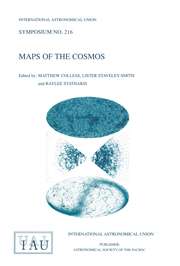No CrossRef data available.
Article contents
Cluster Mass and Metallicity Distributions: Reconstructing the Events During Halo Formation
Published online by Cambridge University Press: 03 August 2017
Abstract
Globular clusters in most large galaxies are a mixture of metal-poor and metal-rich (bimodal), but the halo stars are almost entirely metal-rich. This and other lines of evidence argue that the metal-poor globular clusters formed within widely distributed 108 − 109 M ⊙ gas clouds (supergiant GMCs) during an early burst in which most of the gas was ejected or unused till later rounds of star formation.
New simulations of the growth of pre-galactic potential wells in the early universe now indicate that the initial power-law form of the globular cluster mass distribution (dN/dM ∼ M -1.8) is a miniature replica of the mass distribution of the SGMCs themselves, which grow hierarchically in the CDM potential wells of large protogalaxies.
Information
- Type
- Part 4. Star Cluster Formation and Evolution: Theory and Observation
- Information
- Symposium - International Astronomical Union , Volume 207: Extragalactic Star Clusters , 2002 , pp. 545 - 554
- Copyright
- Copyright © Astronomical Society of the Pacific 2002

